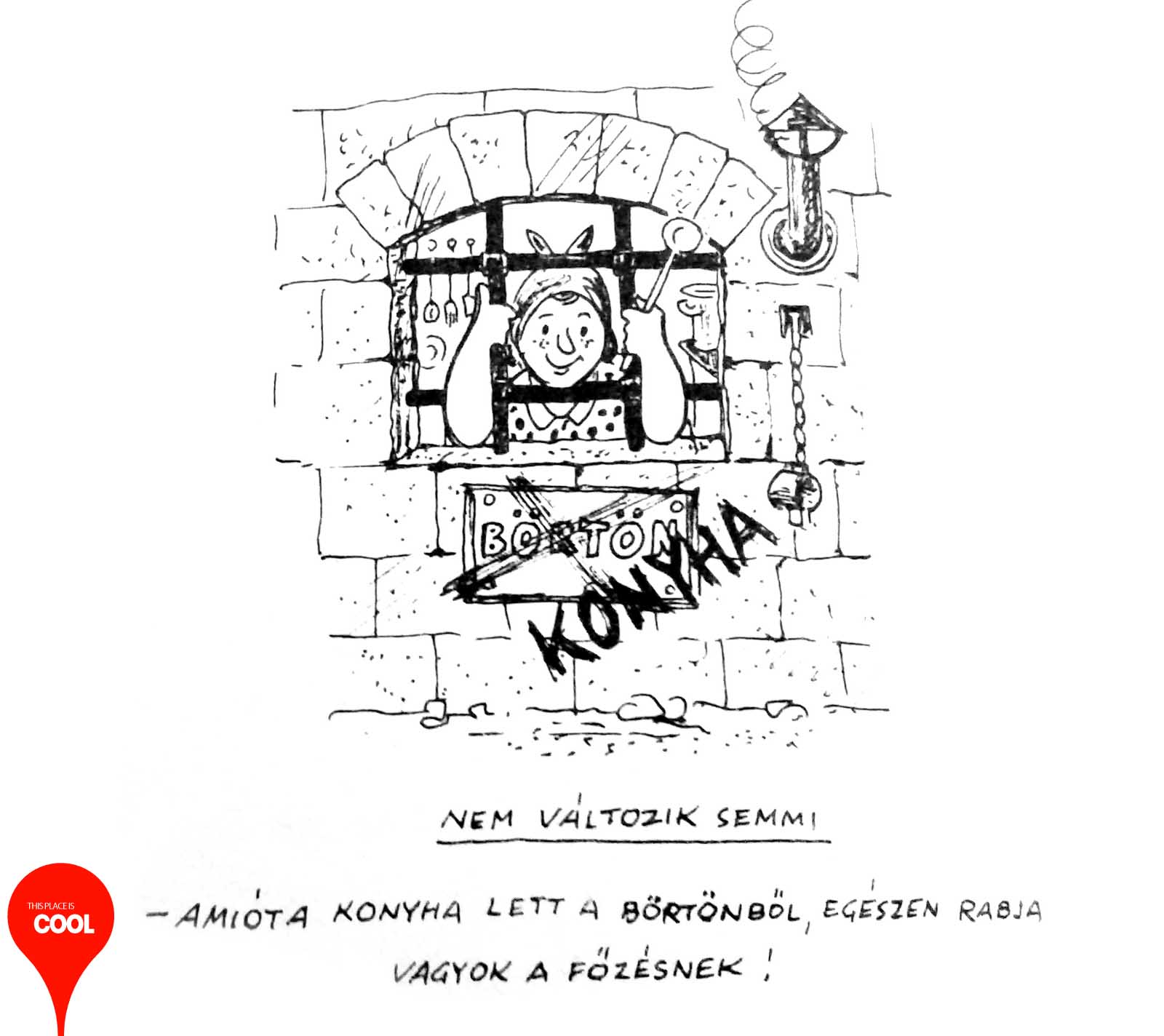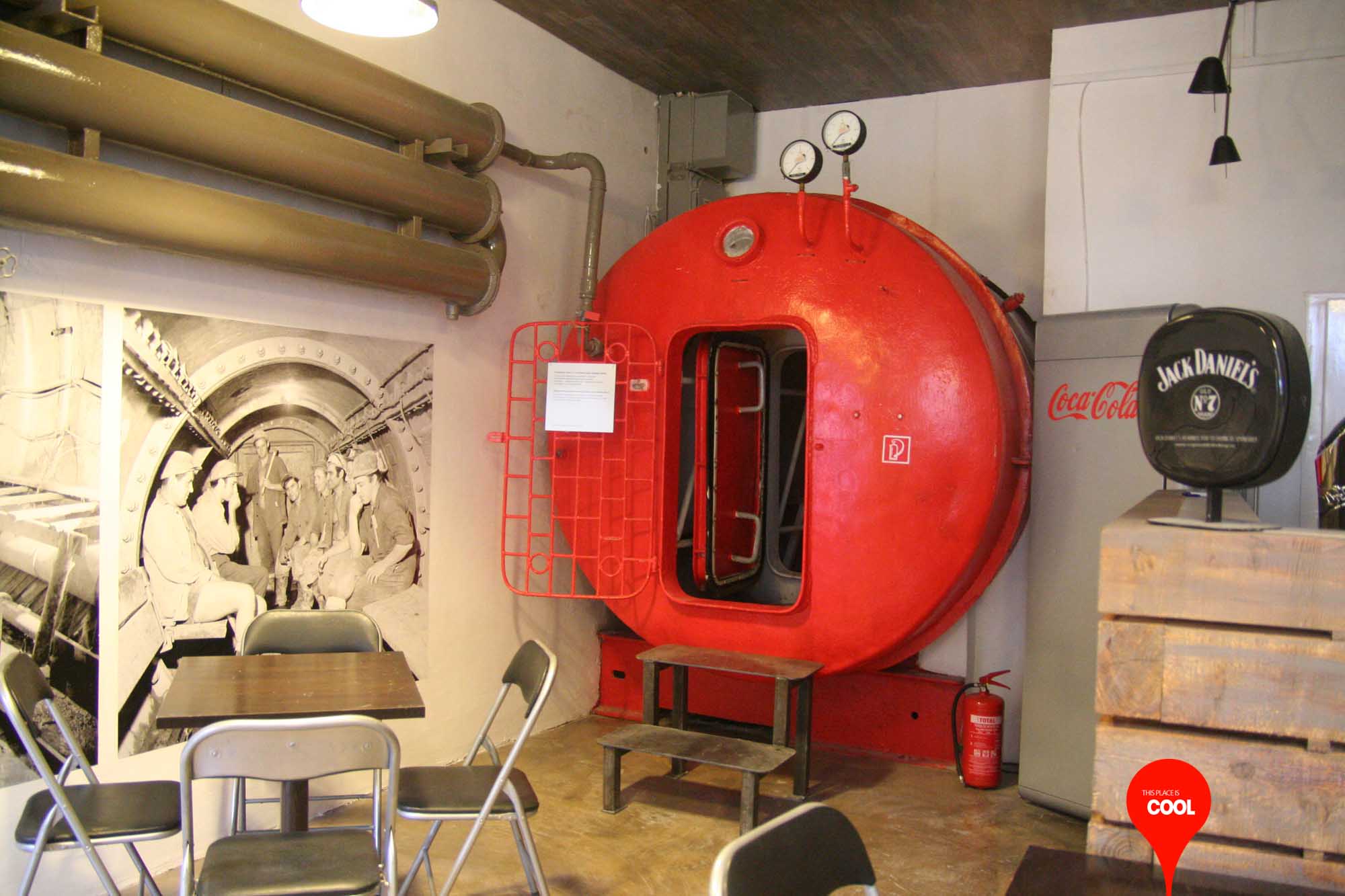Memories of the historical metro line construction are preserved in the garden of Rombusz Terrasse in the form of barrack-style buildings and various outdated signs (ie. Metro KÉV – Central Construction Company) you can find there. The plot also has two service tunnels, one 5.3 metres, the other 3.5 metres in diameter. You can see these as two green mounds in the garden – the larger one my still be used during the future construction of Metro Line 5, while the smaller one is part of the ventilation system of Metro 3. One of the barracks also has a very special chamber in it: the caisson chamber once used during metro line construction. To protect workers against groundwater, underground building sites were highly pressurized – when workers came to the surface, they had to be slowly „brought out” of high-pressure back to ground level air-pressure. Caisson sickness may be familiar from movies in which people have to be brought to the surface from deep underwater, carefully and slowly, to prevent health damage from the difference in air-pressure. Due to this danger the metro line workers had to wait between 10 and 30 minutes in the chamber after coming back above ground.
Today the caisson bar of Rombusz retains most of its original form, is decorated in red, and awaits new visitors.
It may not save lives today, but you can now order a beer at the bar inside – and a good beer is always good for the soul!


